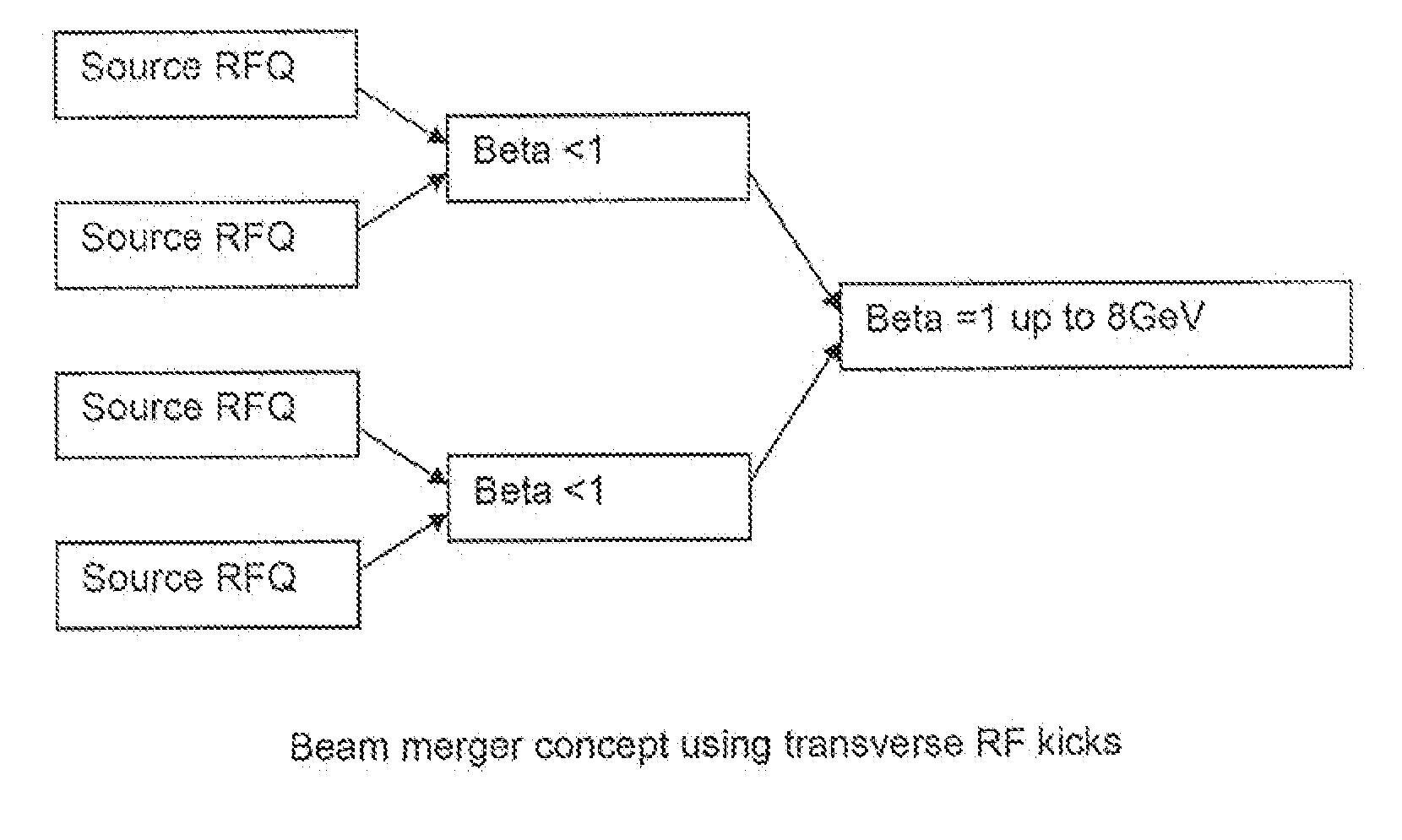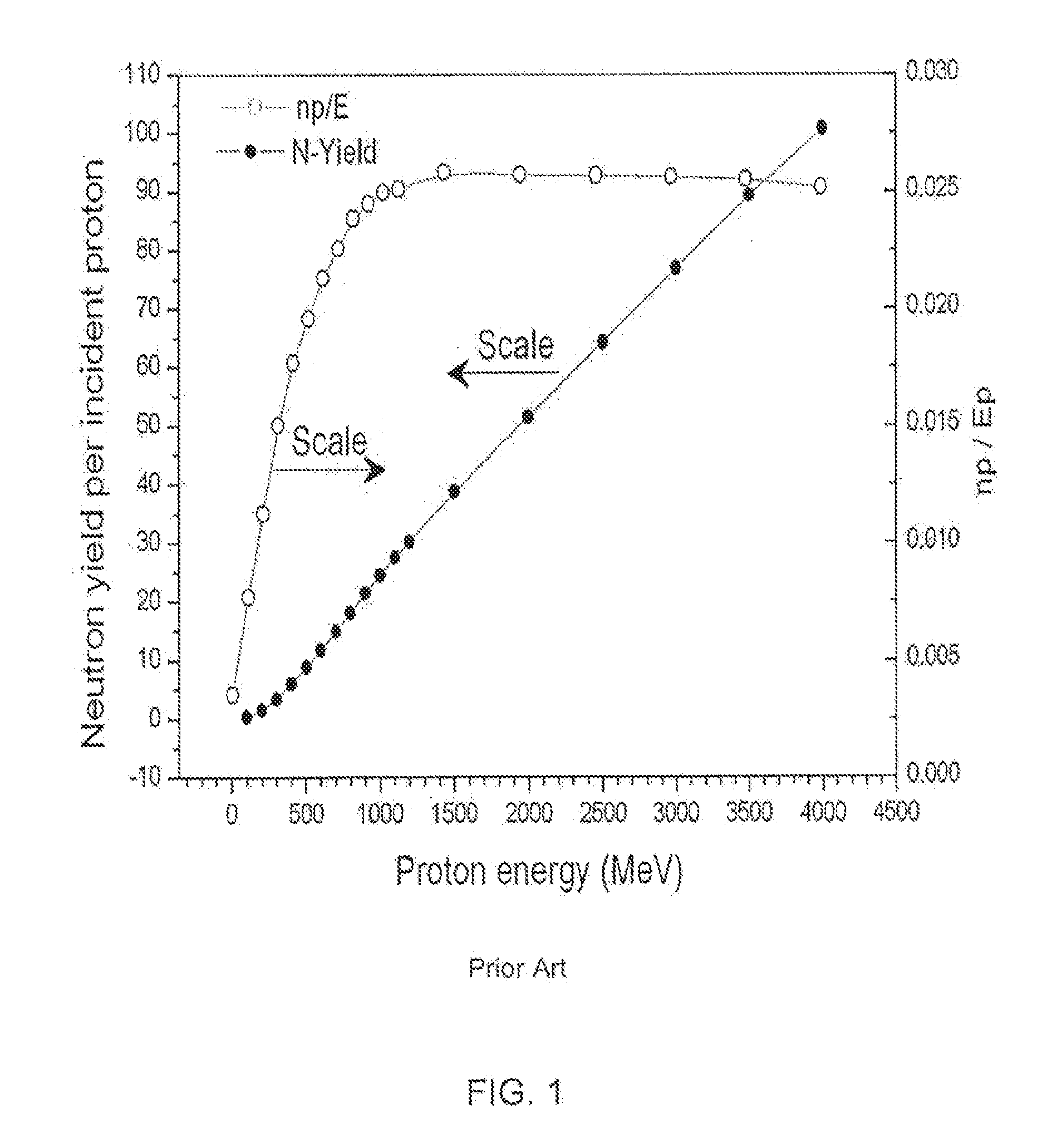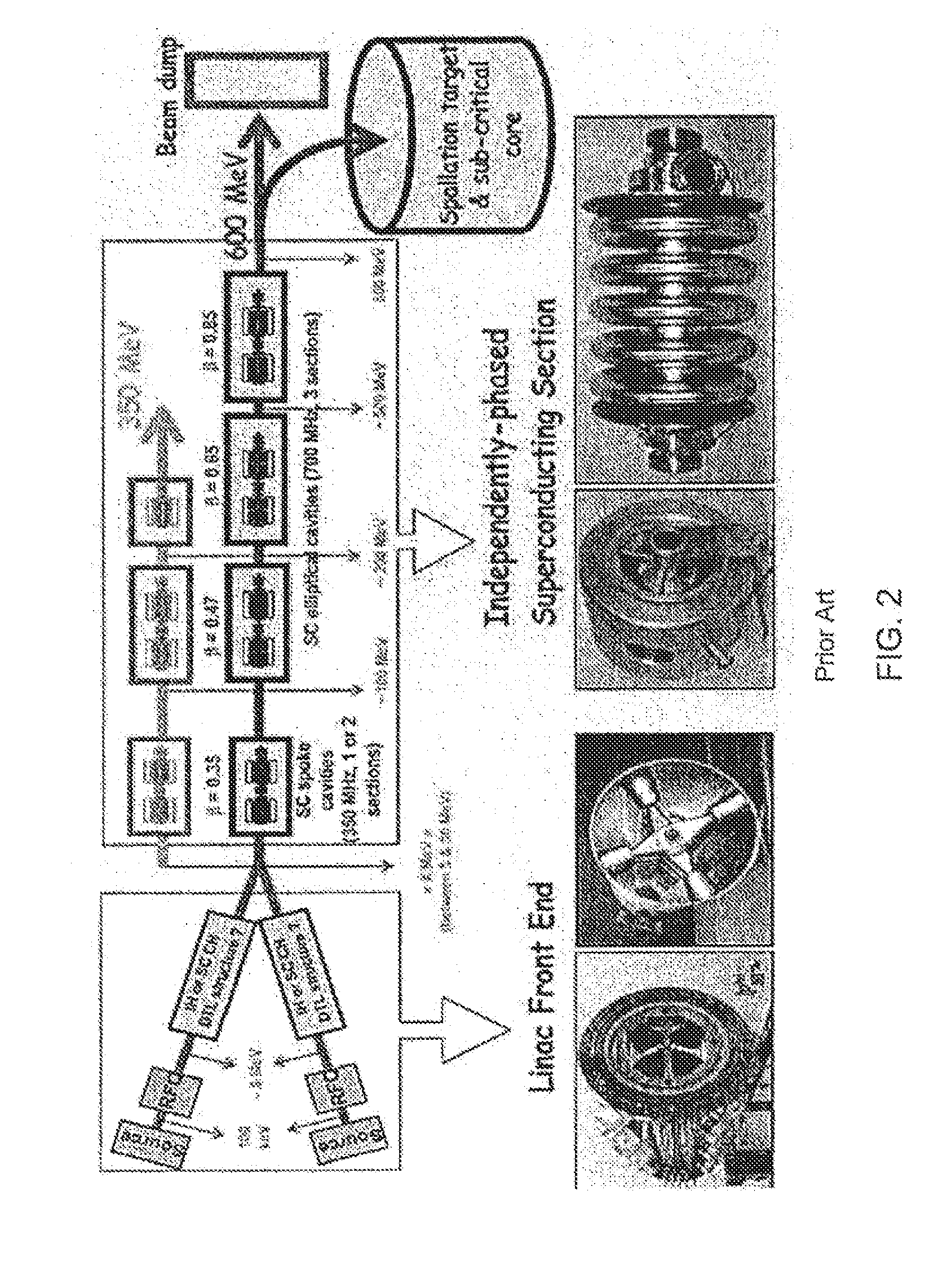Accelerator driven power generation
a technology of accelerators and power generation, applied in nuclear reactors, nuclear engineering, greenhouse gas reduction, etc., can solve the problems of inherently less safe and fast reactors
- Summary
- Abstract
- Description
- Claims
- Application Information
AI Technical Summary
Benefits of technology
Problems solved by technology
Method used
Image
Examples
Embodiment Construction
[0038]An aspect of the contemplated RF apparatus is an accelerator in continuous-wave (CW) operation. Conventionally, light sources have operated in continuous wave while particle accelerators operated in pulsed mode, such as is required for the International Linear Collider (ILC). For high-energy physics purposes, the CW beam may be accumulated and bunched in, for example, 8-GeV storage rings to then produce beams appropriate to the embodiment, injected either directly onto production targets or to feed a 150-GeV main injector synchrotron. As may be seen in FIG. 1, neutron production (yield) from a proton beam increases linearly with beam power for proton energies above about 1 GeV. It is contemplated that CW operation at 8-GeV, for example, with average beam current of 12.5 mA gives a proton beam power of 100 MW which may thus be appropriate for a commercial multi-GW-scale ADS power plant.
[0039]Some may suggest that an ADS design at such an energy level could require a size and co...
PUM
 Login to View More
Login to View More Abstract
Description
Claims
Application Information
 Login to View More
Login to View More - R&D
- Intellectual Property
- Life Sciences
- Materials
- Tech Scout
- Unparalleled Data Quality
- Higher Quality Content
- 60% Fewer Hallucinations
Browse by: Latest US Patents, China's latest patents, Technical Efficacy Thesaurus, Application Domain, Technology Topic, Popular Technical Reports.
© 2025 PatSnap. All rights reserved.Legal|Privacy policy|Modern Slavery Act Transparency Statement|Sitemap|About US| Contact US: help@patsnap.com



